Changsong Lei
Automatic Tooth Arrangement with Joint Features of Point and Mesh Representations via Diffusion Probabilistic Models
Dec 23, 2023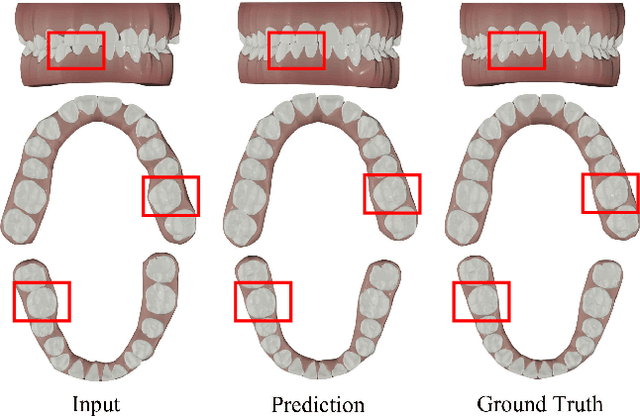
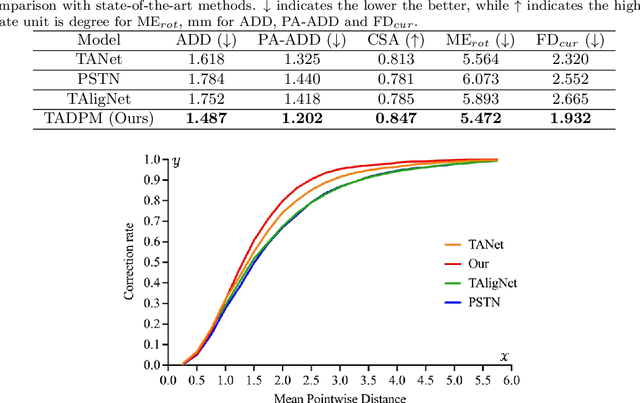
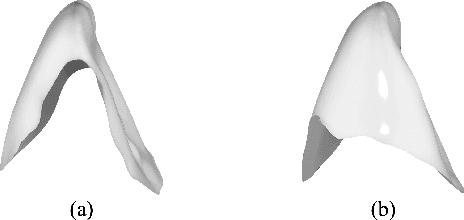
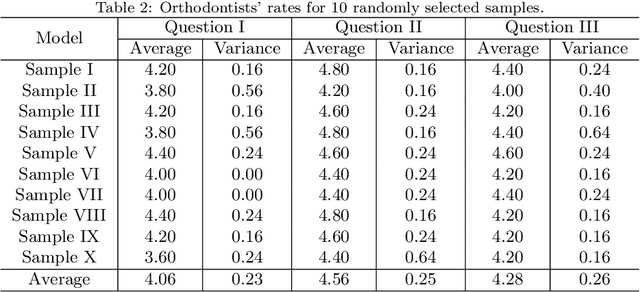
Abstract:Tooth arrangement is a crucial step in orthodontics treatment, in which aligning teeth could improve overall well-being, enhance facial aesthetics, and boost self-confidence. To improve the efficiency of tooth arrangement and minimize errors associated with unreasonable designs by inexperienced practitioners, some deep learning-based tooth arrangement methods have been proposed. Currently, most existing approaches employ MLPs to model the nonlinear relationship between tooth features and transformation matrices to achieve tooth arrangement automatically. However, the limited datasets (which to our knowledge, have not been made public) collected from clinical practice constrain the applicability of existing methods, making them inadequate for addressing diverse malocclusion issues. To address this challenge, we propose a general tooth arrangement neural network based on the diffusion probabilistic model. Conditioned on the features extracted from the dental model, the diffusion probabilistic model can learn the distribution of teeth transformation matrices from malocclusion to normal occlusion by gradually denoising from a random variable, thus more adeptly managing real orthodontic data. To take full advantage of effective features, we exploit both mesh and point cloud representations by designing different encoding networks to extract the tooth (local) and jaw (global) features, respectively. In addition to traditional metrics ADD, PA-ADD, CSA, and ME_{rot}, we propose a new evaluation metric based on dental arch curves to judge whether the generated teeth meet the individual normal occlusion. Experimental results demonstrate that our proposed method achieves state-of-the-art tooth alignment results and satisfactory occlusal relationships between dental arches. We will publish the code and dataset.
Towards More Accurate Diffusion Model Acceleration with A Timestep Aligner
Oct 14, 2023
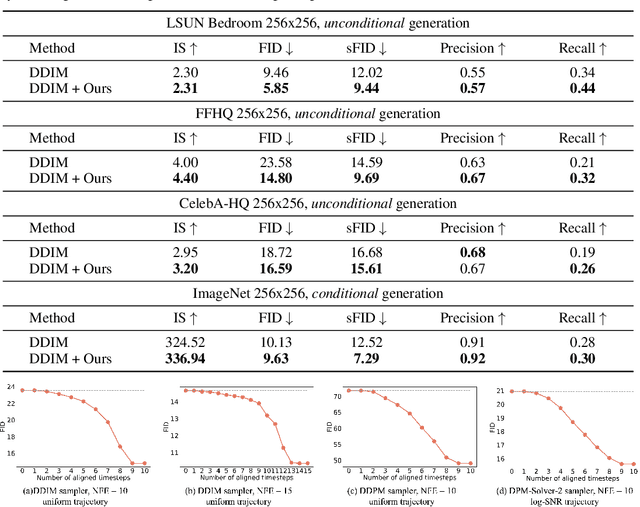


Abstract:A diffusion model, which is formulated to produce an image using thousands of denoising steps, usually suffers from a slow inference speed. Existing acceleration algorithms simplify the sampling by skipping most steps yet exhibit considerable performance degradation. By viewing the generation of diffusion models as a discretized integrating process, we argue that the quality drop is partly caused by applying an inaccurate integral direction to a timestep interval. To rectify this issue, we propose a timestep aligner that helps find a more accurate integral direction for a particular interval at the minimum cost. Specifically, at each denoising step, we replace the original parameterization by conditioning the network on a new timestep, which is obtained by aligning the sampling distribution to the real distribution. Extensive experiments show that our plug-in design can be trained efficiently and boost the inference performance of various state-of-the-art acceleration methods, especially when there are few denoising steps. For example, when using 10 denoising steps on the popular LSUN Bedroom dataset, we improve the FID of DDIM from 9.65 to 6.07, simply by adopting our method for a more appropriate set of timesteps. Code will be made publicly available.
 Add to Chrome
Add to Chrome Add to Firefox
Add to Firefox Add to Edge
Add to Edge